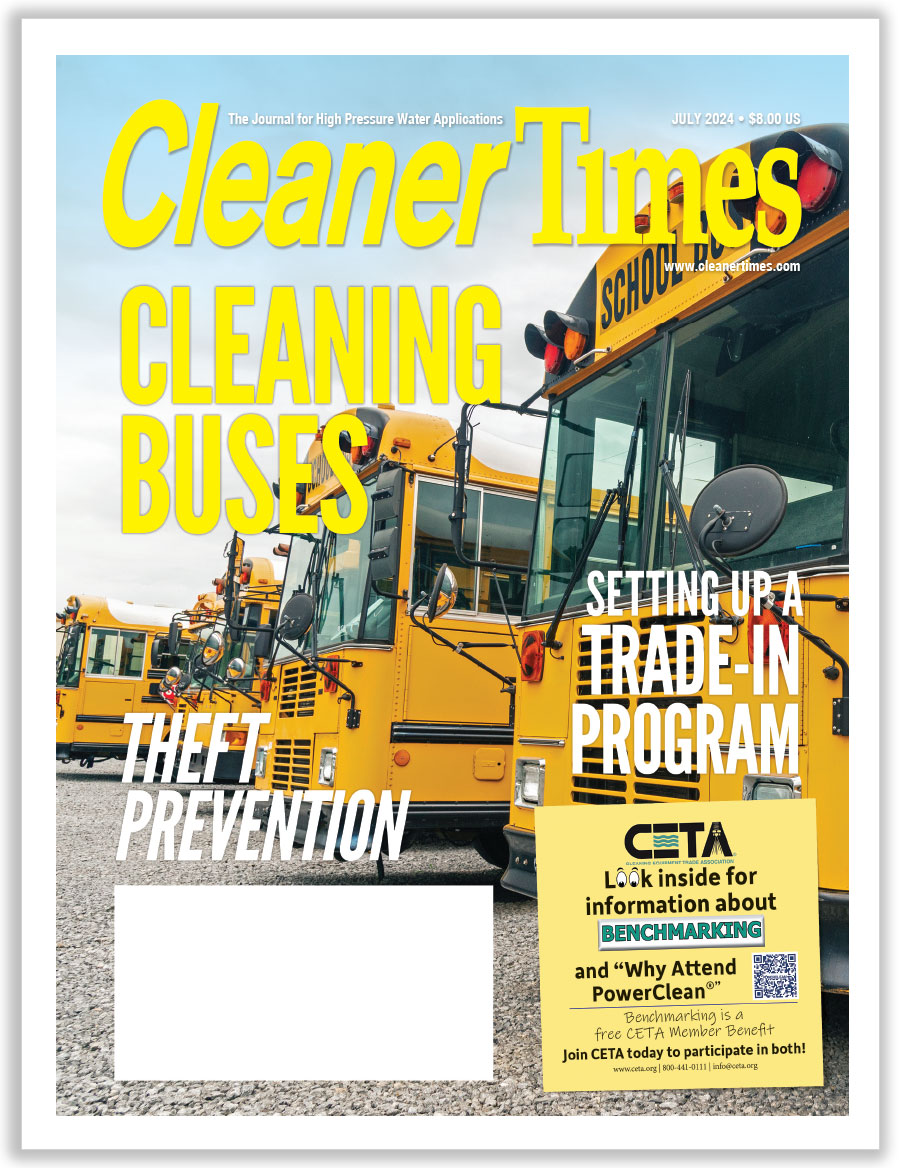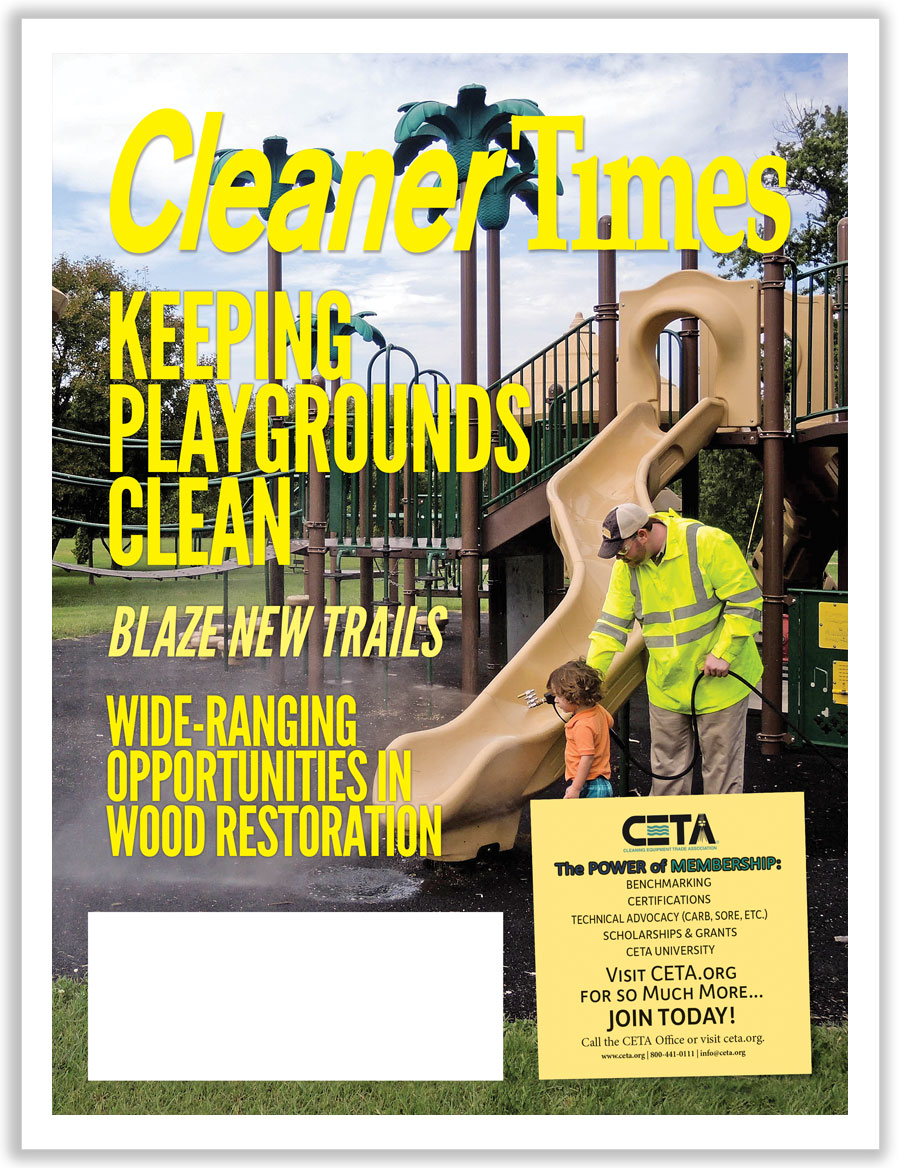
Branding and Marketing in the Car Wash Industry
By Diane M. Calabrese / Published May 2023

What’s an attention getter?
Flame, torch, and sword might start a list. Fair enough, because the trio of words are tied to the Old English root word “brand” (or brond).
The concept of burning or searing something can be harsh unless it’s strictly metaphorical—as in branding, which links to a good mark in someone’s memory.
In the modern world, branding is a partner to marketing. It’s not enough to market a product. A product must be distinguishable from similar ones in its niche.
That’s where branding enters the equation. Does the car wash industry have to get involved in branding? Indeed, it does.
No economic sector can evade branding in 2023. (Just look at health care. Everyone needs health care, but the providers want to make certain the consumer knows what makes them the best choice among competitors.)
Marketing or branding, which comes first? Neither, because quality comes first (and last).
Quality must undergird everything, explains Bruno Ferrarese, co-president of Idrobase Group, Borgoricco PD, Italy. Consider the biggest challenge in the car industry. What is it?
“It is to ‘change skin’ by working no longer on price but on service, focusing on the quality,” says Ferrarese. “To be competitive, quality must become the goal to pursue.”
Price will be affected naturally when quality is pursued. Is there an example? “There will be room to innovate by producing new washing solutions that will inevitably also have a spin-off in the area of cost reduction, thus squaring the circle: more quality at a lower cost,” says Ferrarese.
It’s not a dearth of brands that characterizes the car wash industry. Instead, the industry has a profile unique to itself.
“The sector is fragmented; there are, in fact, many brands, but only a few of them work on brand identity. Most just ‘brand’ the car wash,” says Ferrarese. “There are still no brands strong enough to guide the consumer to choose one over another.”
What customers rely on absent that strong guide is a tried-and-time-tested approach to buying. “The determining factor in the choice is still the positive publicity that customers, satisfied with the quality of the result, share by word of mouth,” says Ferrarese.
Both marketing and branding are about making a connection with customers. That’s why a word-of-mouth recommendation from a trusted person works so well as an informal marketing tool.
To amplify what’s natural, markets tap already established connections with customers. Consider foam, an entity known well to the car wash industry consumer. It’s a good fit as a marketing hook.
“Foam brings out in the unconscious a memory common to us all, that of playing with bubbles and foam, which everyone has experienced in their childhood even if only by taking a shower or a bath,” says Ferrarese. “It is a positive and happy memory that attracts the consumer. In my opinion, this is precisely the lever to focus on in the promotion of the car wash, supported by the company’s know-how.
“In fact, our company’s foam is easily promoted for its intrinsic value and quality: it clings to the bodywork for 10 times longer than nebulizers, thus allowing the use of less aggressive and more environmentally friendly detergents,” continues Ferrarese.
A result so good it gets noticed and then spoken about to others is in essence a recognition of brand. Achieving it requires due diligence.“Many people think that washing a car is a simple operation but are unaware that in order to achieve a quality wash that does not scratch and dull surfaces in a short time, it is essential to have quality equipment and detergents and a staff with highly specialized know-how,” explains Ferrarese.
In other words, quality outcomes derive from quality inputs. Training is a must.
“This is a point that is as underestimated as it is indispensable: properly trained personnel make the difference,” says Ferrarese. “The solution must be to educate personnel with special washing schools accompanied by higher salaries.”
Ferrarese emphasizes that investment brings returns. “With these two elements—qualified training and more adequate salaries—quality washing will be achieved in less time, which will compensate for the higher costs of training, salaries, and the equipment and detergents used.”
Public Face
Pithy and potent—keep it simple and sweet (KISS) applies. Take it out of the realm of product promotion and think about cattle. Each cattle owner has a brand that is easy to identify, unique, and straightforward.
Imagine cowhands trying to sort through the equivalent of free verse on the hind quarter of a cow. Unfortunately, occasionally marketers try to tell too much in what should be the hook and not the full story. Hook and then reel.
Among the many good resource guides available from the Library of Congress (LOC.gov) is Brands and Advertisements, which describes a brand as “the public representation of a company, or a company’s product or service.”
The brand is the image that the public attaches to a company when the name of the company is mentioned. Any company wants that image to be positive.
It’s not uncommon for an icon viewed positively by one generation of consumers to be viewed differently by successive ones. It might not be viewed negatively, but it might raise so many questions that the company behind the brand gets lost in the messaging.
Know the audience. What is the prospective customer seeking? A quality outcome/product most assuredly. And then, all the ancillaries, such as ease of obtaining product, longevity, and to some extent cost.
There’s a balance between cost and longevity. Consumers will pay for something, such as a car wash, that lasts longer. Even in times of economic complexity (like this period), customers know that paying for something that lasts longer can be the best of their choices.
Ease of obtaining a quality product also becomes a factor. Whether it’s a car wash operator restocking soaps and supplies or a car owner seeking a wash, waiting poses a difficulty.
Any difficulty in obtaining a product catalyzes a negative perception of a brand. For pragmatic reasons a car wash operator cannot simply wait for the best supplies while customers go elsewhere. Similarly, a car owner cannot wait in an hour-long queue for a wash irrespective of its excellence.
Quality encompasses all dimensions of a product. Positive interaction with any and all personnel connected to the product is a must. An employee who is gruff or distracted could be remembered much more than the superb result in cleaning and be enough to tarnish the image of the brand.
A company can only develop a brand if it understands its market niche. There are consumers who visit car washes irregularly and to whom expediency—get most of the dirt off and make it look better as quickly as possible—is most important. They will respond to a brand that advertises and lives up to speed and good-enough results.
There are also customers who are more than happy to do some of the work at a car wash if they can save money in doing so. They go to a car wash because their municipalities ban at-home washing with a hose, bucket, and sponge. Or, they want to pick up a bit of speed and power by using a self-serve wand. Perhaps they just want to use a self-serve vacuum.
Convenience draws many customers. Self-serve and basic car washes tied to service stations and/or convenience stores are popular in many parts of the country.
Are there cross-over customers? Definitely. (Consider the family on a road trip who out of necessity must find and use the nearest car wash.) But in branding, a manufacturer of car wash products or the owner of a car wash must reach the primary audience, the one from which the most customers will be drawn.
One way to develop a marketing pitch—and bolster a brand—is to think in reverse. List the things customers don’t want. Topping the list is damage—no damage from car wash equipment and no damage from soaps or chemicals applied.
Effective. Safe. Two words that get attached to many brands for a reason. Consumers—and regulators—both expect them.
It may be easier to develop a brand than it is to decide how to package it. The highest-quality product possible can lose its target audience with errant packaging. A manufacturer must always be alert to cultural differences when selling internationally. In the simplest case, certain colors can signal death in some countries and should not be used for packaging.
A clean, sleek automobile is probably the best image for a package, if an image is to be used. The image projects good results. A clean, well-kept facility does the same—heralds good results—for a car wash facility.
High-quality products and services can command higher prices. The more synonymous a brand is with quality, the more loyalty it engenders from customers. In a world with a lot of unpredictability, consumers are willing to pay for something they know will be exactly what they want.
Branding makes excellent products easily recognizable.







